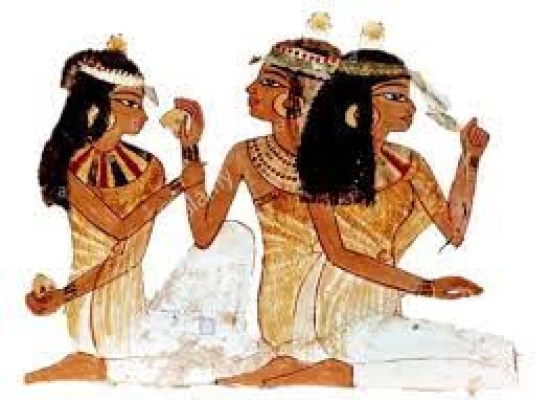
Cosmetics and Make Up in Ancient Egypt
Ancient egyptian makeup facts
On Saturday, the sights of many were focused on the parade of the ancient royal mummies from Cairo’s Egyptian Museum in Tahrir Square to the National Museum of Egyptian Civilization in Fustat.
When it comes to the mummy parade consisting of 18 kings and 4 queens, more of the talk centers on the make-up and cosmetics of ancient Egyptians which quite a number of people happen to associate with, some might think the use of make-up and cosmetics is a trend of the modern days but it has historical roots in ancient Egypt, the royal families, the Egyptian aristocrats and even the average citizens cherished beauty as part and parcel of their existence.
Not only did ancient Egyptians use make-up to beautify their physical appearance, they also used cosmetics and incense in rituals that had symbolic meanings. The science behind cosmetics and perfumes was so advanced for the Egyptians that the word ‘chemistry’ (derived from ‘alchemy’) has ancient roots in Kemet, the ancient name for Egypt in the Egyptian language.
For the ancient Egyptians, beauty was synonymous with divinity and they would decorate even the Egyptian gods with make-up, while archaeological findings have revealed grave goods burial sites among both men and women which include mundane objects like brushes and perfumed creams and cosmetics.
Ancient Egyptian eye makeup
Males and ladies of all socioeconomic strata used Egyptian kohl, and the two most popular eye pigments were galena (a black lead-based ore) and malachite (a green copper-based ore). Burning inexpensive frankincense or nut husks produced black soot smoke, which Kohl contained. People who applied kohl to their eyes were shielded from the dust and intense heat of the desert.
Ancient egyptian makeup products
The red pigment found in tombs indicates the use of colour palettes applied to the cheeks and lips. The pigment may have been naturally produced by red iron oxide also known as ‘ochre’ mixed with animal fat or vegetable oil. This red colour was applied to the lips as lipstick and Cleopatra is believed to have used powdered beetles to achieve the perfect shade of red.
The most famous perfume known in ancient Egypt was kifi, which consisted of frankincense, myrrh, mastic, pine resin, cinnamon, cardamom, saffron, juniper and mint. It is presumed that the Egyptians were fond of long lasting sweet and spicy perfumes especially in the hot and arid regions.
Old paintings and engravings present with this description suggest that during celebrations, both males and females in ancient Egypt adorned perfume cones on their heads. These cones probably held burning resins for the purpose of vaporing the scent onto the wearer’s face and body heat, although no archeological proof has been found to suggest this.
Cosmetic palettes or boxes: Calcite jars were used to hold make-up and perfumes, and materials such as glass, gold or semi-precious stones were used to apply eye paints and oils.















